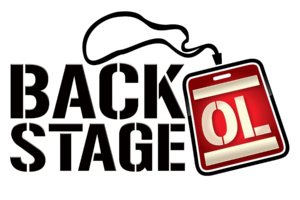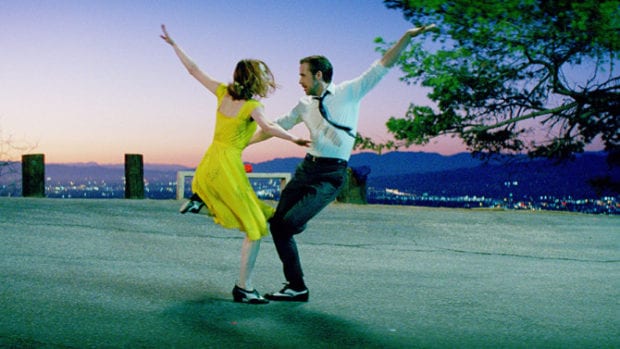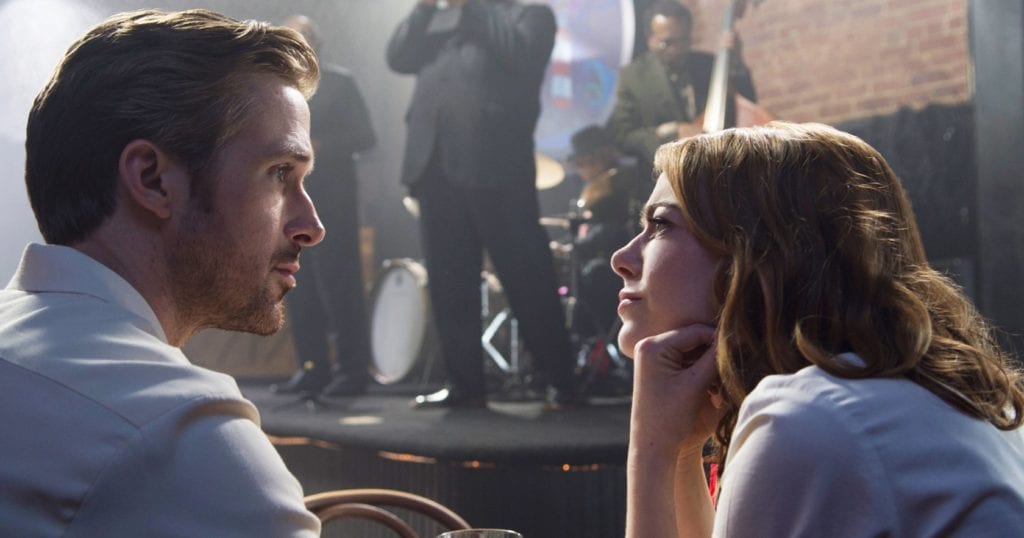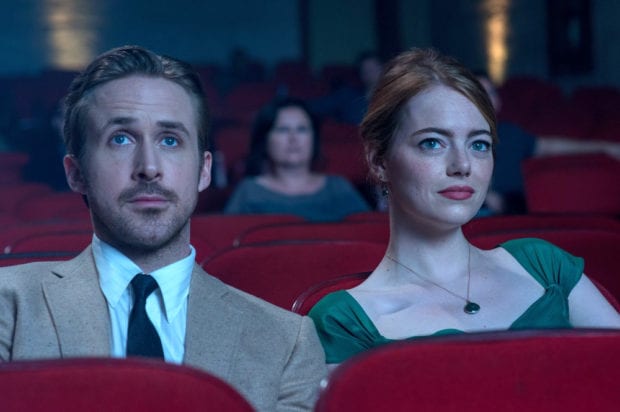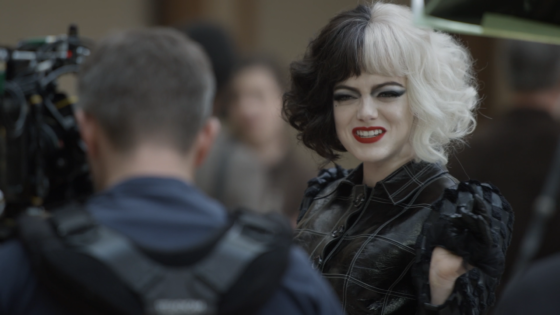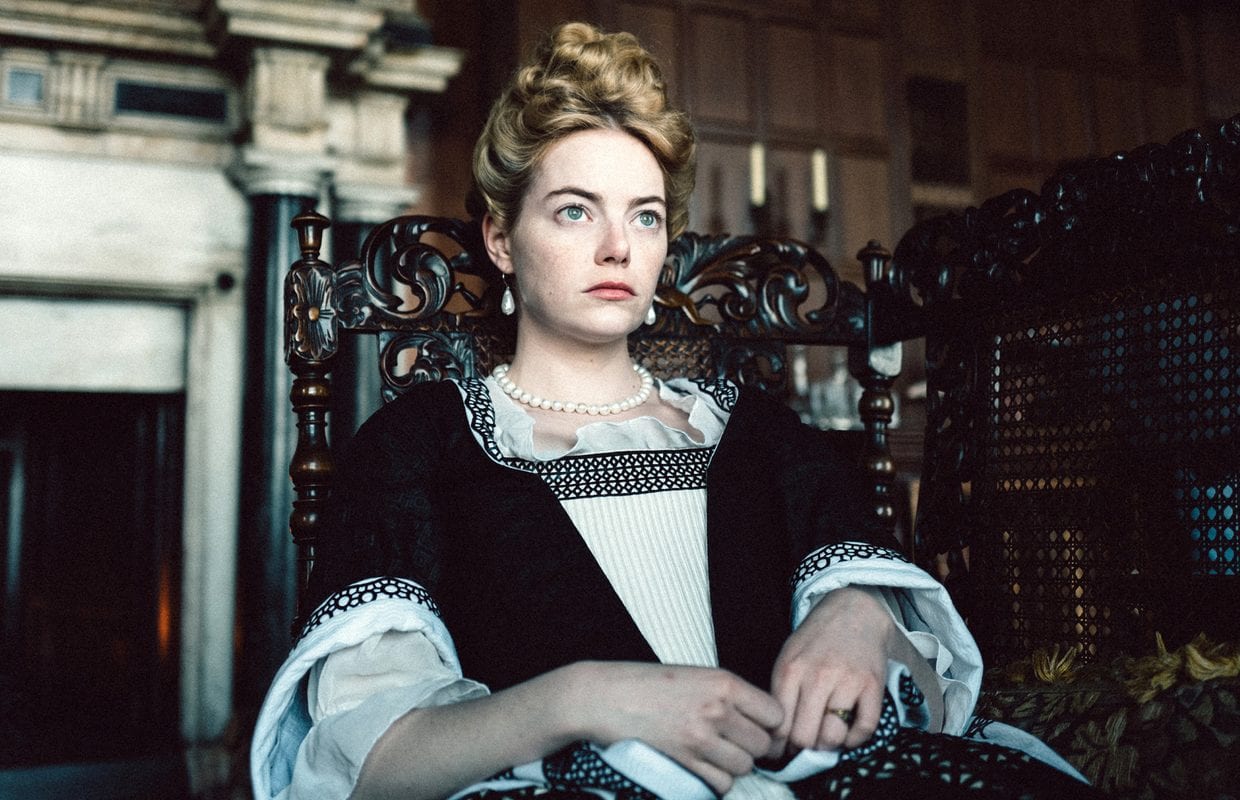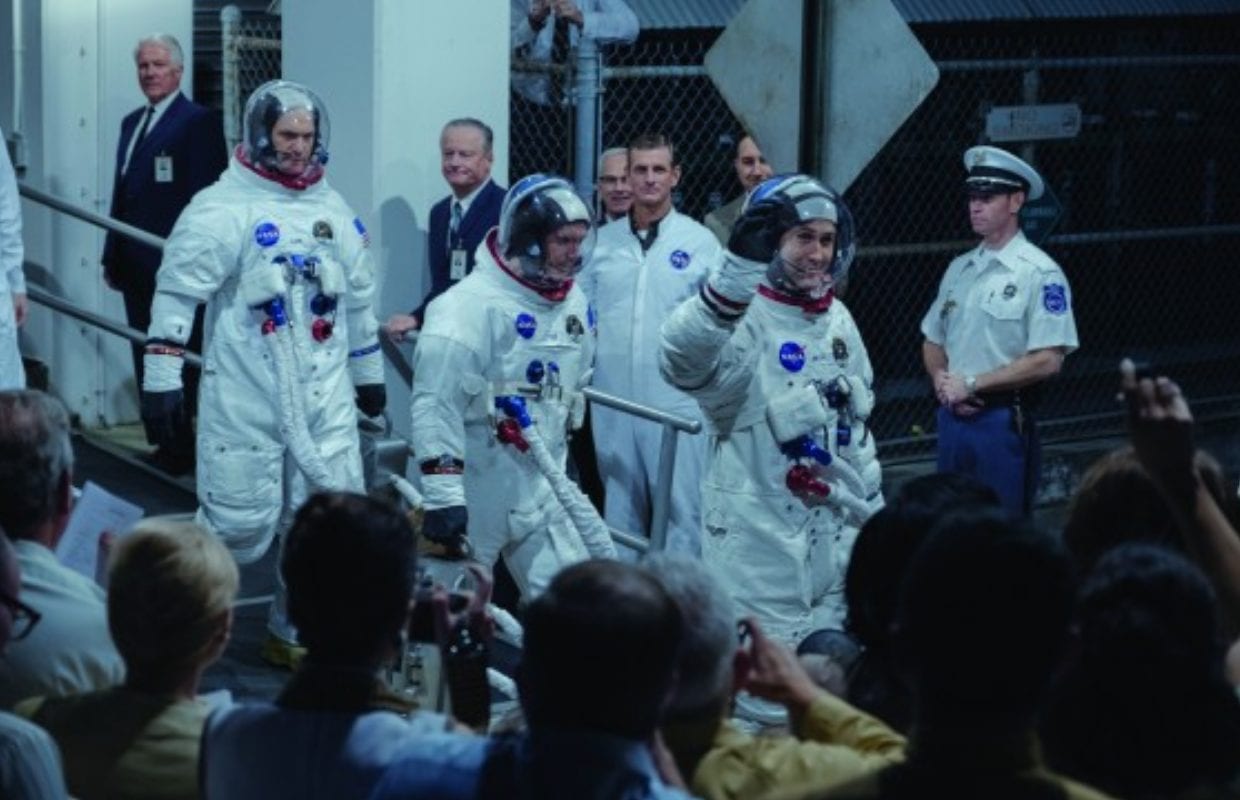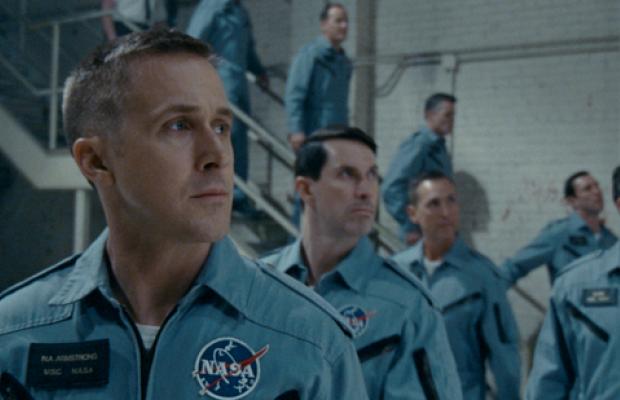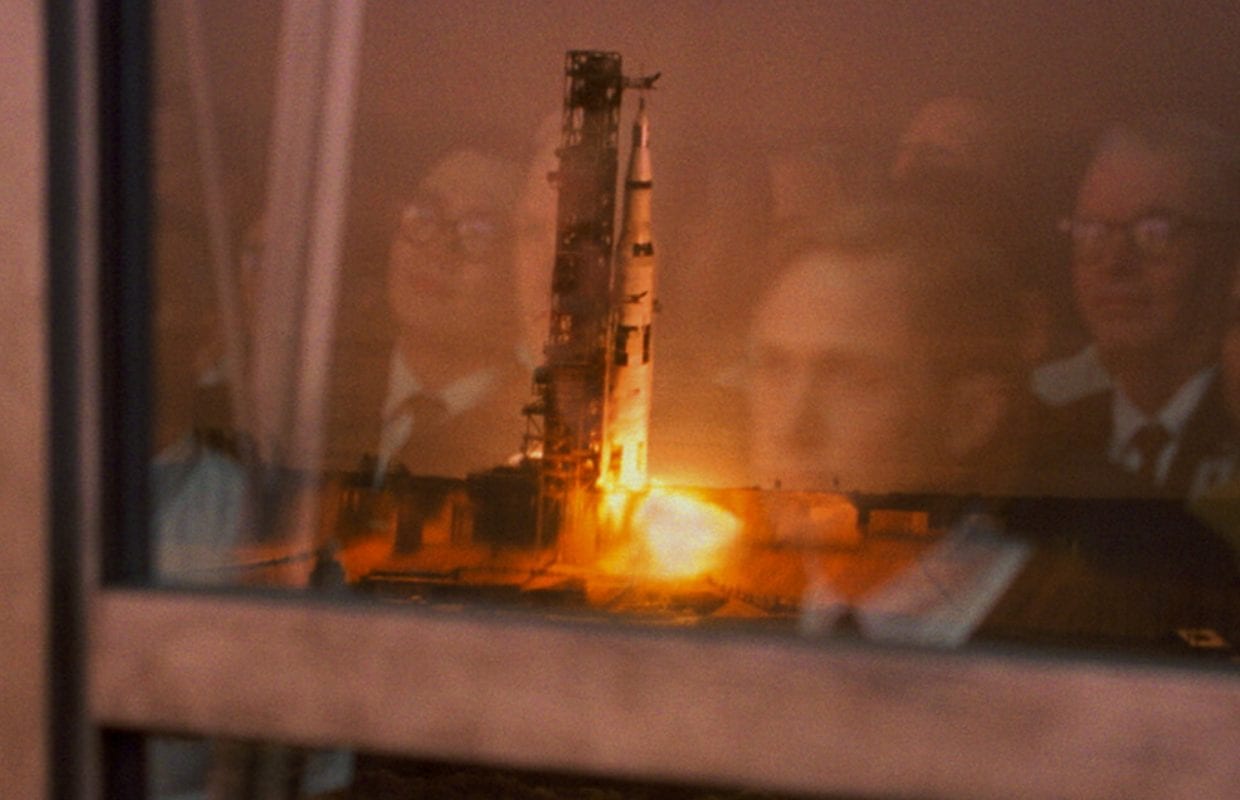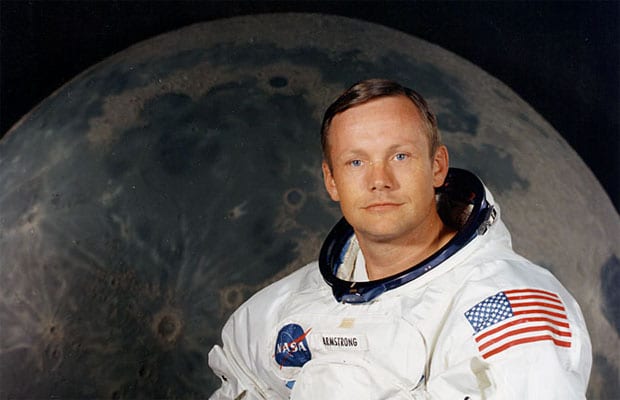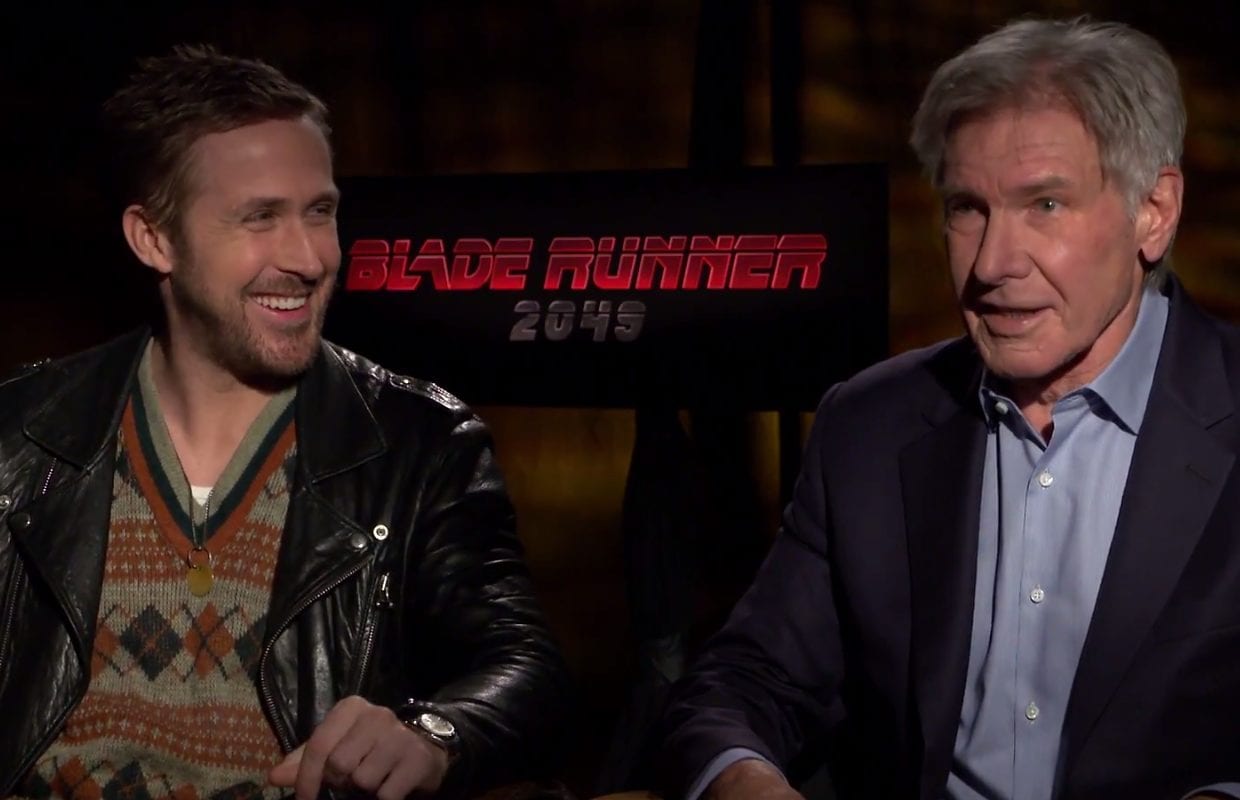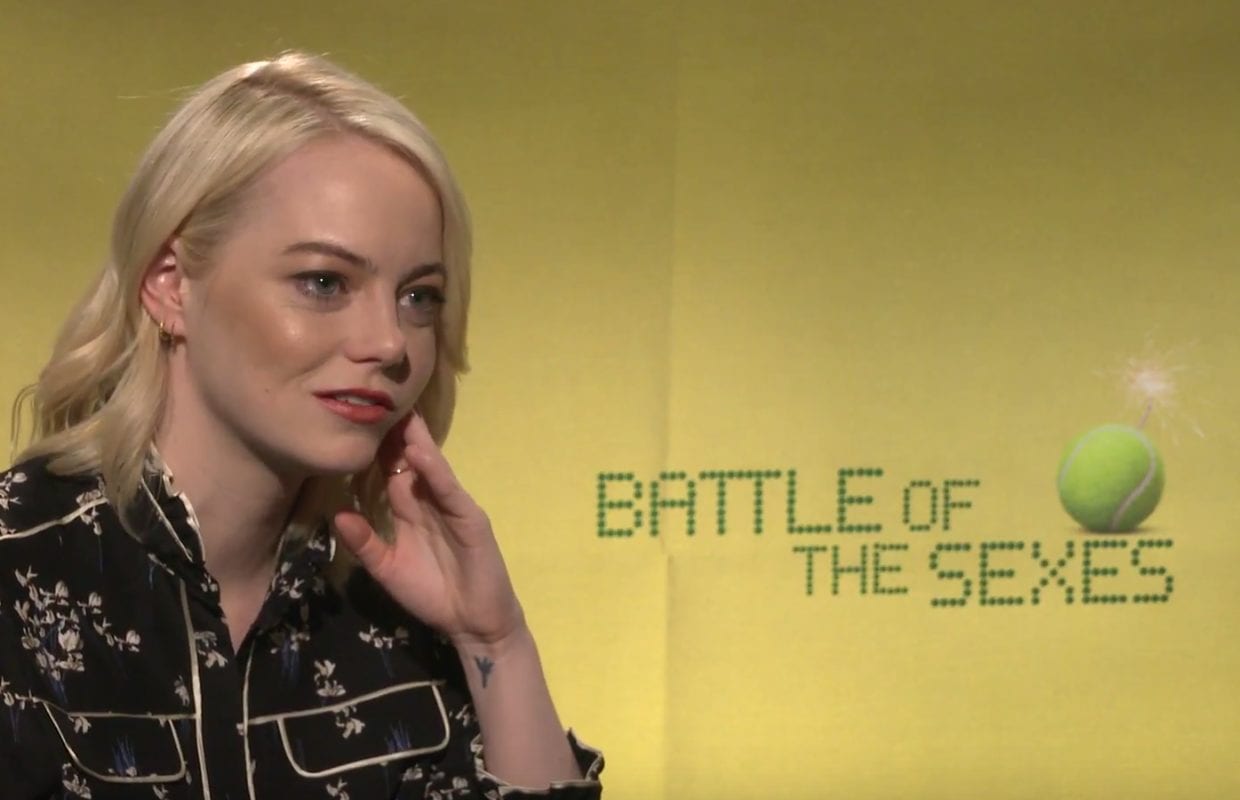La La Land is a musical romance that is ignited by a horn and a finger. A boy is stuck in a traffic jam, the convertible top down, and he fiddles with the tape deck, playing and reversing and playing again. The music is jazz. Traffic begins to move but the girl in the car in front remains motionless. He honks. The car does not budge an inch. Frustrated, he quickly passes her while firmly pressing the car horn. His reward is an extended middle finger. They go their separate ways.
Intervening fate and happenstance would see them cross paths again. At a bar he brushes past her. What a jerk. They meet again, at a party, and this time there’s no cold shoulder or finger extended. Third time is a charm and the boy digs the girl. Finally. All should be happily ever after. Alas, this is just the first verse.
Sebastian (Ryan Gosling) is the boy, Mia (Emma Stone) is the girl, and this is their love story. What you need to know going in to the musical, written and directed by Damien Chazelle (Whiplash), is that this isn’t the same old song and dance romance. La La Land is not a Broadway show adapted by Hollywoodland. Nor does it contain a curated Spotify playlist of pop hits. Justin Hurwitz’s music and lyrics from Benj Pasek and Justin Paul, however, do have the power to lift spirits and turn cynics into optimists. The power of love is real. Just ask Huey Lewis.
From the opening (a color-rich Cinemascope logo) to its twinkling, cursive-lettering The End, Chazelle serves notice that he loves old Hollywood. So much so in Mia’s apartment Ingrid Bergman’s visage is adorned on one wall, and another with a poster of The Killers starring Burt Lancaster. It just so happens she is a barista at a coffee shop on the Warner Bros. Studio lot. Mia dreams to make it as an actress, just like Bergman, yet fields questions on if a pastry is gluten-free. It would have been to on the nose if the poster was of Lancaster in The Sweet Smell of Success.
As for Sebastian, he’s a pianist and jazz aficionado, and gleefully boasts that he owns a piano stool that Hoagy Carmichael once sat on. Yet his sister sits on it as if it were a piece of junk picked up for a few bucks at a garage sale. How dare you besmirch the throne of the man who gave us “Stardust,” “Georgia on My Mind,” and “Heart and Soul.” Even so, he salvaged it from a jazz parlor that is now a samba place that serves tapas. What a cruel joke on humanity.
Mia has her head in the clouds, looking at acting stardom, while Sebastian hunches, his hangdog expression gazing at black-and-white piano keys. He dreams of owning his own jazz club. To get there he must make it through a set list of old-fashioned Christmas tunes with little pizzazz and wear baggy pants as part of an all-’80s tribute band. If only he could run. Run so far away.
To others around them, Mia and Sebastian are traditionalists. They like things how they were. Which is why the love affair with jazz and actors of yesteryear. Sebastian is a defender for the music most would like to see die. He’s a rebel with a cause. And she hasn’t seen Rebel Without a Cause. Good thing it’s playing at the Rialto, a famed theater that closed in 2007 but has a new fictional life: the place where the bubbly (Mia) and the broody (Sebastian) can sit and be blissful. A destroyed reel can’t diminish the passion that persists Sebastian, and as the old saying goes, the show must go on – all the way to the Griffith Observatory, as featured in Rebel.
Damien Chazelle offers slight jabs when it comes to originality in the world of screenwriting – particularly world building and creating franchises. Then again, his sophomore effort, while not all that original, when staged as a musical it affords him the freedom to give us the sweet and the sour in song form, and it is an aural and visual sight to behold. Where a bottleneck on a Los Angeles freeway gives way to a summer solstice of fun and frivolity, not seated aggression and road rage. We are whisked away as the camera swings and rises, surveying a scene where cars honking is replaced with people on other people’s hoods and the roofs of vehicles singing and dancing. It’s a wonderful sight and it only gets better.
The bottleneck bookends nicely with a plum musical number with an ending that offers one last hurrah before settling down to earth. Just like Whiplash Chazelle is calculating when he needs to be. Emma Stone lacks confidence at the start, but her final audition is a stunner. A heartfelt, see me, hear me, love me moment. Ryan Gosling tickles the ivories as if he were a pro, having spent countless hours mastering keystrokes. Matched with suits that make him look as if he were plucked out of a New Orleans jazz club (or maybe he saved some spare button-downs from The Nice Guys), Sebastian is a debonair, golden age crooner for a new millennium.
A film like La La Land should not exist. Thank god it does. To go hyperbolic is rare for me, but I can’t help it. La La Land is oxygen to me. You want to breathe it in. More than that, though. The cinematographer, Linus Sandgren, shoots on film and the colors just burst in your face, as if it were raining Skittles; looking so delicious you wish you could taste the rainbow. The effervescence of fluorescence.
Some might gripe at the final act but it is what Chazelle accomplishes in the scene that is the clincher for the film being a masterpiece. He is able to be climatic and indecisive, drawing the curtains only partly. Alas, when the final curtains are closed you will feel it. Fingers and toes. Heart and soul.
Score: 10/10
Director: Damien Chazelle
Writer: Damien Chazelle
Cast: Ryan Gosling and Emma Stone
Rating: PG-13 (for some language)
Running Time: 128 minutes
